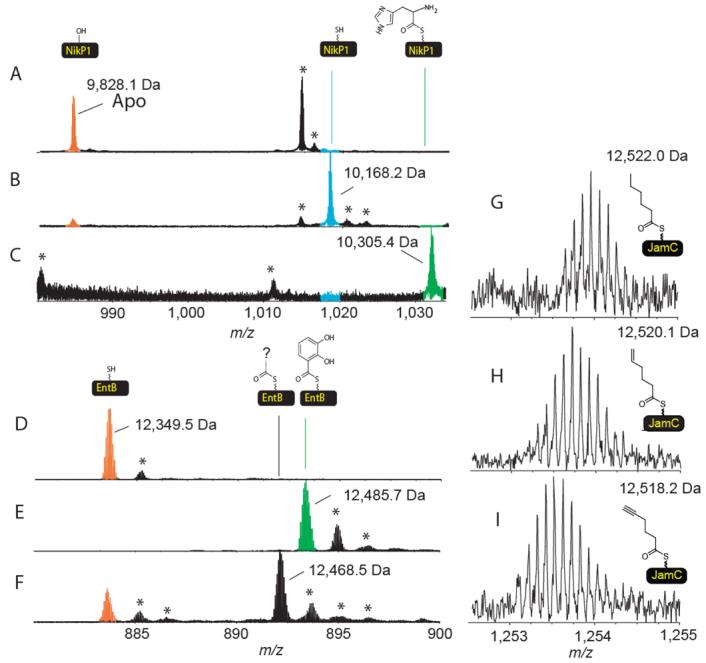Figure 2.

The identification of the preferred substrate by ESI- FTMS. A) The apo form of the carrier site of NikP1. B) Same as C but L-histidine omitted. C) The mass spectrum of the carrier site following incubation with CoA, Sfp and all 19 proteinogenic L-amino-acids, glycine, Lselenocysteine, L-cystine, 4-trans-hydroxy-L-proline. D) Holo-EntB(ArCP). E) Holo-EntB(ArCP) incubated with ATP and all 19 proteinogenic L-amino-acids, glycine, L-selenocysteine, L-cystine, 4-trans-hydroxy-L-proline and 2,3-dihydroxybenzoic acid F) Same as E but 2,3-dihydroxybenzoic acid omitted. G) Hexanoyl-S-JamC (only the N-term Met truncated version shown). H) Hexenoyl-S-JamC. I) Hexynoyl-S-JamC. * indicates salt adducts or non-active site peptides. The ions shown in A, B, C, G, H and I have a 10+ charge state. D,E and F are 14+
